Beginner’s Guide to Injury-free Running for Weight Loss and Health
It is possible to run injury free for weight loss and improve your health. Running isn’t only for professional athletes. Running is a great activity for anybody with the desire to learn. There are many health benefits for new runners. This beginner’s guide to injury-free running for weight loss and health will help get you started.
Meet a Physiotherapist Passionate about Your Health
Dr. Jason Cooper is a physiotherapist with advanced certification in strength and conditioning. He has worked with athletes from professional to beginner. He uses evidence-based research in his approach to getting people back to an active and healthy lifestyle.
I was thrilled when Dr. Cooper agreed to write a blog article about injury-free running for weight loss and health for Pink Ribbon Runner. His tips on learning to run, running for weight loss, preventing injuries, and motivation will get you up and running. And his advice will keep you running for a healthier lifestyle.
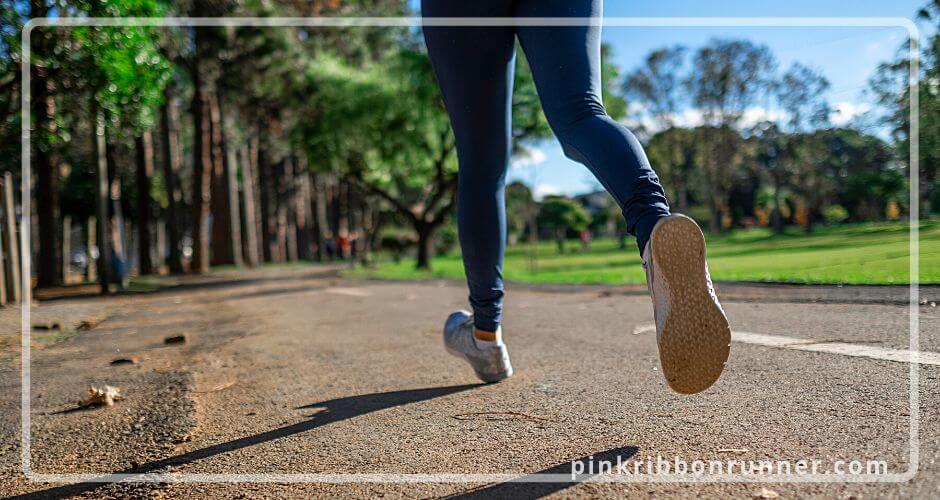
Introduction to Injury-free Running
Running or walking is one of the best and easiest forms of exercise. There are many well documented health benefits to running, but getting started can be intimidating.
If you are new to running, or restarting after a hiatus, it is important to gradually build yourself back up so that you don’t hurt yourself. Even if you are an experienced runner there are some things that you can do to help reduce the risk of injury or overtraining.
Getting Started with Your Running Program
One of the most common reasons people have running injuries is because they do too much too quickly. I usually advise people who are new to running or even returning to running to start with walk and jog intervals. This means that you should start by walking for a few minutes then jogging for a few minutes. You can repeat these “intervals” several times. If you are brand new to running try walking five minutes, then jogging three minutes. If you are able, try this for about three or four intervals. Then, take a day or two off from running again to let your body recover.
As your body starts to tolerate these walk/jog intervals better, the goal is to increase the jogging time and decrease the walking time. For example, after one week of a five minute walk, three minute jog you might be able to progress to a four minute walk, four minute jog the next week. Week three you could move to three minute walk, five minute jog. Keep this progression going until you can jog for about 15 minutes in a row, and then you can slowly build a few minutes onto your running time each week.
If you have some running experience you may be able to progress a little faster, but remember to take it slow at first as doing too much too fast is a common reason for running injuries.
The three main variables you can adjust to make your run harder (or easier) is
- the time you run,
- the speed you run, and
- the incline you run on.
As you are getting stronger, just adjust one of these variables at a time so that you don’t overdo it.
Tips on What to Wear for Comfort and Support
Clothing and footwear are going to be important to consider.
Clothing that Keeps You Dry and Comfortable
Wear comfortable athletic clothing that has good breathability and ideally is moisture wicking. If you are running in colder climates, wear layers that you can take off and tie around your waist, and leggings and long sleeves can help.
Shoes that Support and Cushion Impact
There are many types of shoes, and a lot of which shoe to wear will come down to personal preference. Investing in a good pair of running shoes will be well worth it, and prevent injuries down the line. Usually, a good pair of running shoes is around $100, but you can find sales on the previous year’s model which will work just as well to protect your body.
Ideally, your footwear will prevent your arch from collapsing, but not make you weight bear toward the outside part of your foot. Even if your shoes look good they only absorb compression for about 500 miles. After that there will be more force going through your feet, knees, hips and spine because the foam in your shoe cannot absorb as much. It is best to monitor your mileage and change your shoes every 500 miles.
In a perfect world you would even have two pairs of running shoes that you can alternate between to give each pair a few days to decompress the soles and allow for better shock absorption.
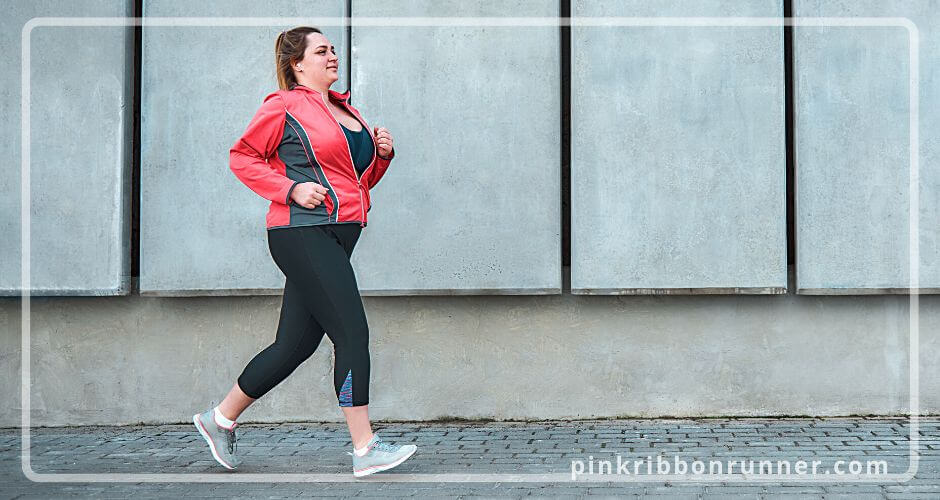
Tips for Injury-free Running for Weight Loss
If one of your main goals of starting to run is to lose weight, there are some basic guidelines that can help you.
Keep Your Heart Rate in a Fat Burning Zone
Your heart rate is an indicator of how hard your body is working and can guide you about how hard to push things.
Losing weight means that you are trying to burn fat that is stored in your body. Fat cells, called adipose tissue, can be converted to glucose which is the energy source that our body runs on. Converting adipose into glucose takes a few steps chemically. Because this conversion takes a few steps, it is important that you are not exercising at a high intensity or your body will utilize more freely available glucose that is already in your bloodstream or in your liver.
The key to exercising to lose weight is to do a longer duration, but at a lower intensity.
The formula to figure out your ideal heart rate to lose weight is 60% of your max heart rate. Max heart rate is calculated with the formula 220 minus your age.
Ideal Weight Loss Heart Rate = 0.60 x (220 – your age)
For example, if you are 50 your ideal fat burning heart range is (220-50) x0.6 which is 102 beats per minute.
Use the “Talk Test” to Burn Fat
If you don’t have access to heart rate monitoring you can rely on the “talk test.” The talk test is simply that you should be exercising at an intensity where you can talk comfortably without becoming short of breath. But, it should not be so easy that you can sing without becoming short of breath.
Train a Little Harder to Build Cardio Fitness
If you are training and wanting to build your cardiovascular engine you can train at a harder intensity, about 70% of your max heart rate.
Cardiovascular Training Heart Rate = 0.70 x (220 – your age)
In the previous example a 50 year old’s max heart rate is 170, so to improve your cardiovascular engine your target heart rate would be 119.
More Tips for Preventing Running Injuries
The incidence of running injuries is quite high, and can change depending on a few variables. Between 20%-79% of runners have a running related injury each year. Some pain while running is normal, but pain can be a warning sign that something is wrong.
The general rule is that you want to avoid sharp pain, intense pain, or pain that doesn’t go away.
Pain that is higher than 5/10 on the pain scale should be avoided, and if your pain does not improve within a day or two of your run it is concerning.

Vary Your Workout to Prevent injury
Another way to help reduce your chance of injury is to vary your workout. If you are training for an event consider doing some easy runs, some speed workouts, and some interval workouts.
If you do the same workout or route over and over, your body gets used to it and you might be overtraining.
Strength training is a great supplement to running programs and has great preventative effects. If you need some ideas of how to do some simple at home strengthening exercises, I built a running strength program which you can find here.
If you have a specific running injury I have created downloadable physical therapy home exercise rehab programs at reCOOPERatePT.com to help you with your recovery from specific injuries.
Tips for Running Nutrition, Hydration and Recovery
Without going into too much detail, I want to touch on nutrition, hydration, and recovery.
The Best Eating Habits for Runners
The food you eat a day or two prior to your run is what is fueling your body, not what you eat right before. Try to eat plenty of complex carbohydrates, fruits, and vegetables the day before to give yourself healthy fuel. Avoid eating a large or heavy meal within a few hours of running, as more blood will go to digest your food and there will be less blood available to carry oxygen to your muscles.
I like to run in the morning before I’ve had too much to eat throughout the day, and typically have a banana with almond butter, some hard boiled eggs, or half a bagel before I run.

Runner Hydration and Recovery Drinks
Hydration is critical to running well. You will have to replenish both the water and electrolytes that you lose through sweating. Essentially, as you sweat there is less fluid in your body which makes your blood more viscous. That puts additional strain on your cardiovascular system, and makes it harder to carry oxygen through the bloodstream to your muscles.
Be sure to drink plenty of water or electrolyte drink prior to and during your run. If it is hot or humid, you will need more fluids than usual. Following your workout a recovery drink can be helpful. My favorite is milk with protein powder mixed in to help promote muscle growth and regeneration.
Benefits of Running
One of the biggest benefits to running is its simplicity. You will not need much, just some time, some shoes, and the desire to be healthier.
A systematic review published by the British Journal of Sports Medicine looked at data from more than 230,000 runners for up to 35 years and found some compelling results. Even running just ten minutes a day five days a week decreased mortality rates by 30% from heart disease, and 23% from any form of cancer.
Running just 10 minutes per day decreases mortality from cancer by 23%
Another study showed that longevity for runners increases in men by 6.2 years, and in women 5.6 years. Other well documented benefits of jogging show that it can
- reduce your stress levels,
- help give people more energy,
- increase productivity,
- manage weight, and
- improve sleep quality.
Working out in the morning can have the biggest impact to help increase productivity and focus throughout your day.
People who run or jog also have improvements in mood, sense of well being, and reduction of depression and anxiety.
The physiologic changes in the body are also quite numerous and beneficial. There is a
- reduction of adipose tissue,
- increase in lean muscle tissue,
- increase in bone density,
- increased ability to circulate oxygen in the bloodstream,
- greater efficiency of cells to produce energy,
- decreased resting heart rate,
- increased cardiovascular strength,
- decreased blood pressure, and
- better blood sugar control.

How to Stay Motivated to Run
Staying motivated to run can be challenging, but here are some tips that can help.
Internal motivation has been proven to be more motivating than external motivation. This means that you should want to run because of how it makes you feel and what it does for you, not because of more external effects such as the way it will make you look.
The goal of your running program is to be sustainable. You do not have to do too much with your workouts. Remember, you are in this for the long haul so there is no need to do too much too fast.
Find a way to make your running fun. Try saving a favorite podcast or playlist to listen to only when you are running.
Setting a realistic goal and then rewarding yourself will help keep you on track. For example, maybe you can aim to run 2x a week for a month, then buy yourself a new pair of running shorts or workout shirt.
One of the best ways to keep up with your running program is to have a running accountability partner. Running with someone is a great way to do this. But you can also have someone check in with you about your consistency via text, online or a workout app like Strava.
I love the Strava app as it keeps records of all my runs. It compares data over time in terms of pace, distance, perceived effort, and even the mileage per week, month, and on my shoes. You can connect with other runners who will keep you on track, and can set and manage your goals all in one place. You can also choose to work towards participating in an event, such as a 5k (just over 3 miles), and find free training programs online to help you prepare.
Running is a Great Way to Improve Physical & Mental Health
A running or walking program is a great and simple way to improve your physical and mental health. It is one of the best things you can do to improve your cardiovascular health. Even a small amount of running can help you live longer. While running injuries are quite common, there are many ways to reduce the risk of injury. Don’t do too much too fast, vary your workouts, and have good supportive shoes. If your goal is to lose weight, remember that you need longer duration and lower intensity exercise to allow for your body to convert stored fat into energy that you can burn. Stay motivated by setting realistic goals, have some accountability, and most of all make it fun.
Photo credit: depositphotos.com
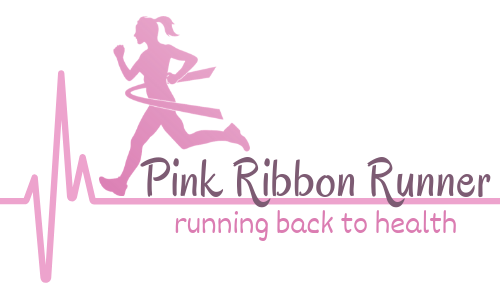





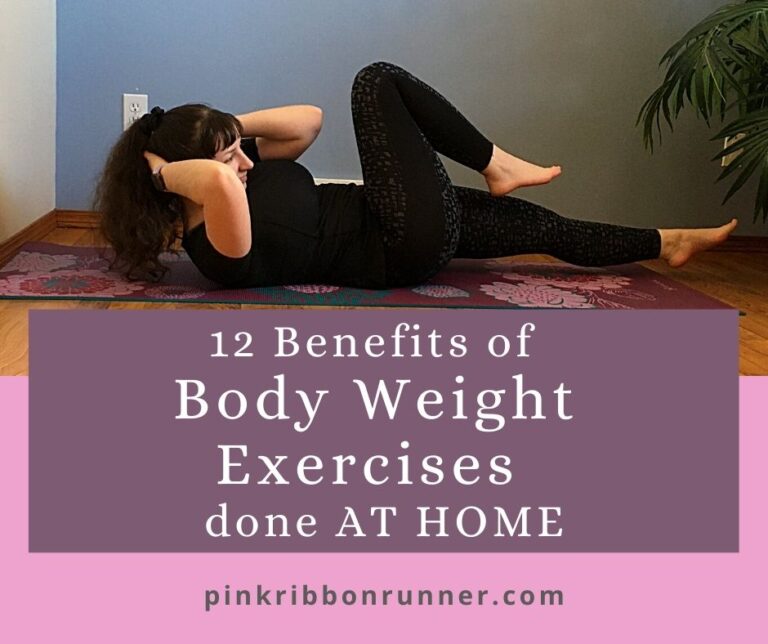

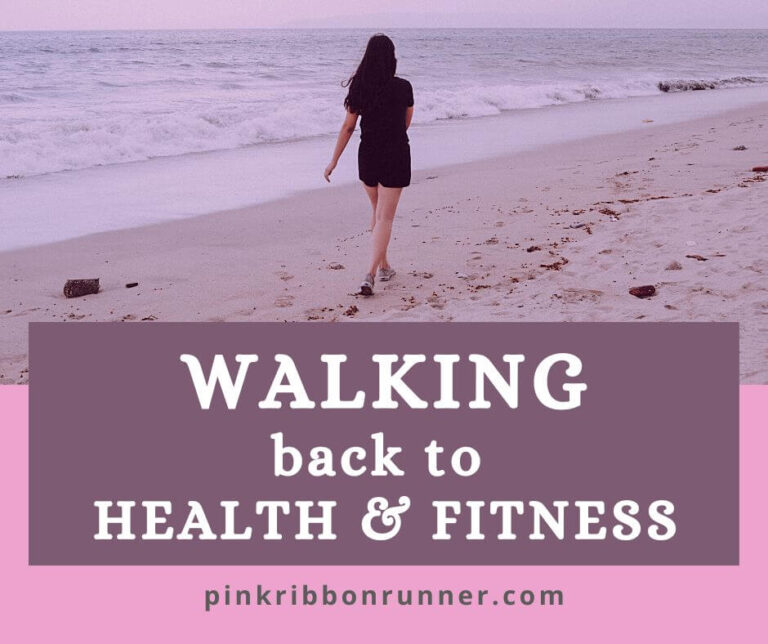


Nice article, I actually need to start running considering the benefits of running. Thanks for sharing.
This is a great post. I used to run years ago but I stopped because I started feeling nauseaous. Maybe I will go back to it and see how I feel.
Thank you for this! I actually stopped running as I injured my knee. But now I think I can slowly get back to it using all your tips!
The facts about running effect on cancer rates got my attention… I think I need to start running for at least 10 minutes now…
As someone who has considered running, but prefers to walk, it’s interesting to learn about the benefits of exercising at a lower heart rate for longer periods. Well written article with good tips.
Such an excellent article regarding running. I enjoy running and continue to challenge myself. I have the Nike app. Thank you so much for sharing this wonderful post. 😊